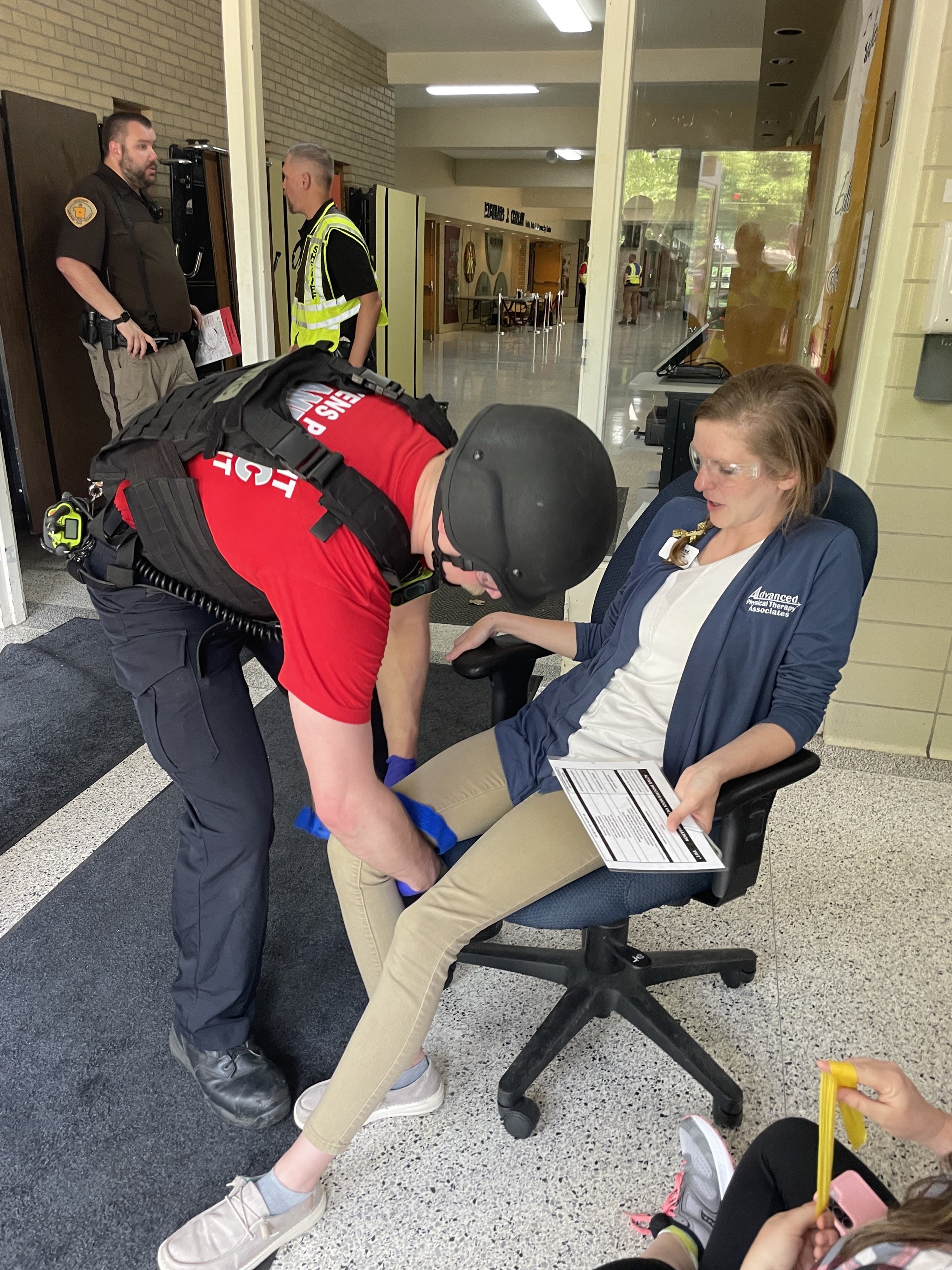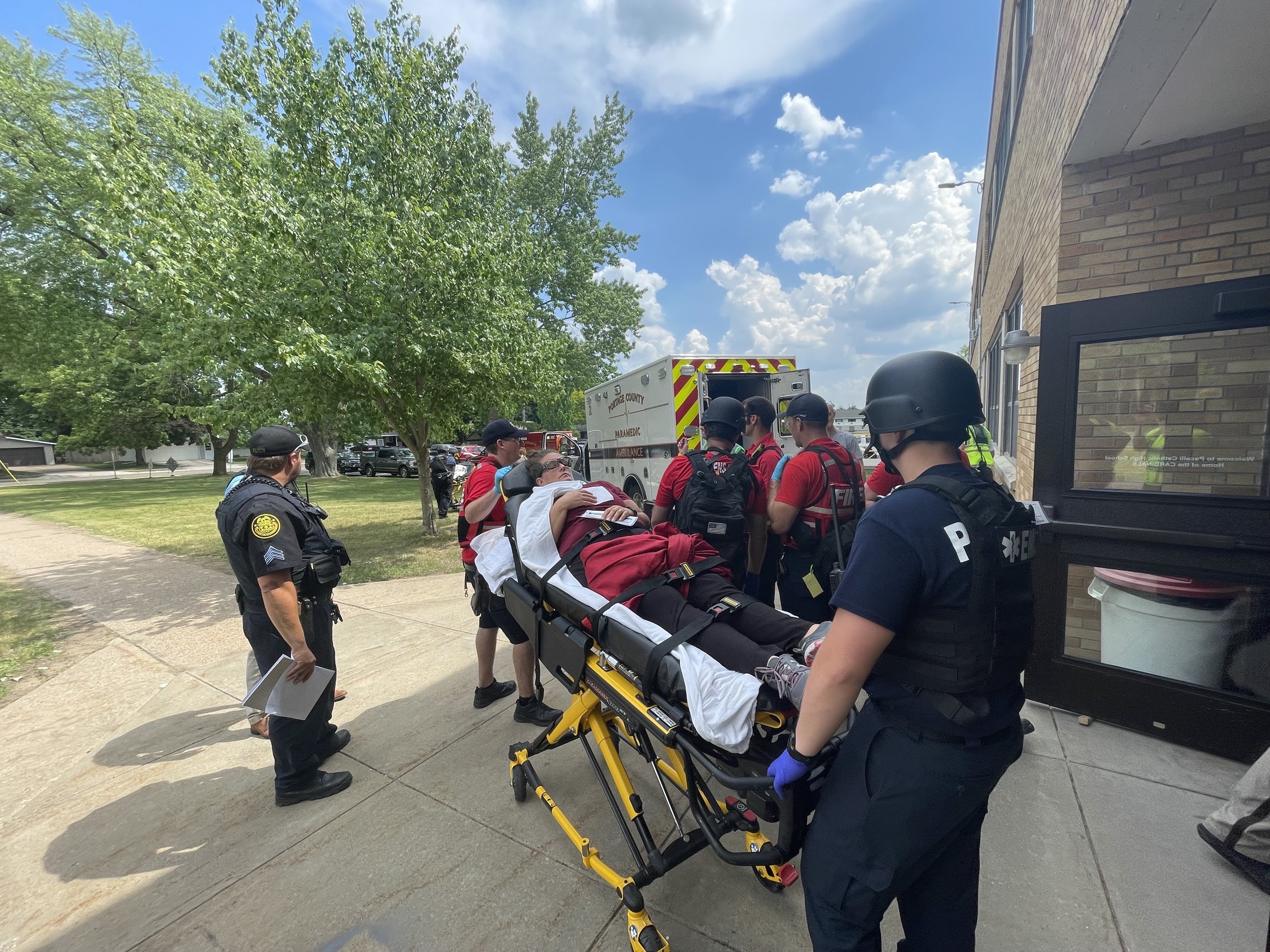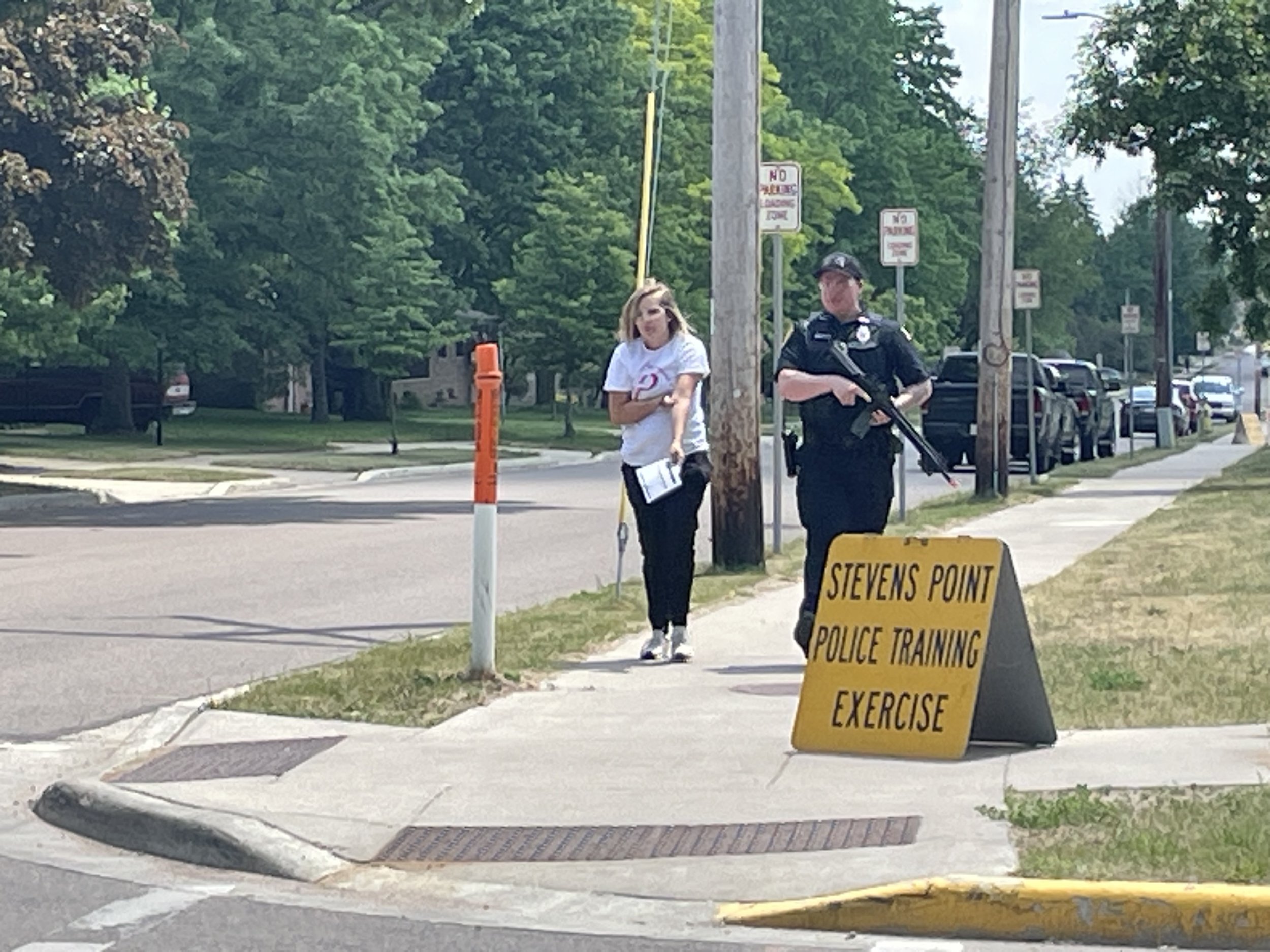Recreating the Unthinkable: The Stevens Point Mass Casualty Event




Even when you know it’s a simulation, you’re a bit on edge. Maybe it’s because everyone is.
Or it might be the card they handed you to identify your role in the simulation, which reads “ACTIVE SHOOTER MOCK VICTIM INFORMATION.”
Advanced Physical Therapy’s Lynsey Hansen was ready for her role as a shooting victim nonetheless.
“I was hit but still responsive,” Hansen said. “I just followed what was on the card and did my part.”
The mock disaster, held in Stevens Point for Central Wisconsin first responders, required that exact mindset from everyone involved: be prepared to do your part.
The active shooter event is known as Rescue Task Force Training (RTF). Conducted annually by the Stevens Point Fire Department, Police Department and Emergency Medical Services Team, RTF provides the training ground for multiple agencies to respond to a simulated disaster scenario. The collaborative effort identifies opportunities for enhanced coordination among the agencies tasked with stabilizing a complex situation and triaging victims at a time when every second matters.
While this was Hansen’s first participation in the event as a member of Advanced PT, her boss has been there a few more times.
“Advanced has been working with Stevens Point Police and Fire for 13 years, so this was my 13th,” said Traci Tauferner, Director of Industrial & Tactical Medicine. “I go every year to RTF training, and every year I learn something new.”
Often assisting as a victim in the dress rehearsal, Tauferner recently has taken a step back to view things as an observer.
“As the provider of onsite rehabilitation for Stevens Point Police and Fire Departments, it’s a perfect time for us to educate ourselves about the physical aspects required by personnel to effectively do their jobs in a high stress mass casualty event,” said Tauferner. “With that knowledge, we will understand how we can best rehab them if they have an injury.”
In previous drills, Tauferner focused on her role as victim, viewing the triaging interactions she had with first responders tending to her injuries. This year’s perspective afforded her the opportunity to see department interactions, triage tools, deployment, and the results of public safety partners who have planned and trained together.
Scrutinizing the approach of first responders in managing a large-scale crisis assists Advanced onsite tactical providers.
“We aren’t police officers or firefighters,” said Tauferner. “If we don’t study how they do their work, we won’t understand how to strengthen them, condition them, rehab them, and protect them if they have an injury.”
Hansen, fresh from her first acting stint, appreciated the combined efforts of those who pitched in to coordinate the event.
“You’ve got staff members and groups from multiple locations—Stevens Point, Plover, Portage, etc.—that participate, which is so important because each situation will be unique and you’re going to need to pull from every available area,” Hansen said. “So getting that experience is so beneficial for all parties.”
Afterwards, departments held debriefing sessions, both individually and jointly; those wide-ranging conversations help drive next year’s training. All participants acknowledge the intricacies of fine-tuning the rapid deployment of resources among multiple groups, but their overarching goal is simplicity itself:
To create a unified response that saves lives.
